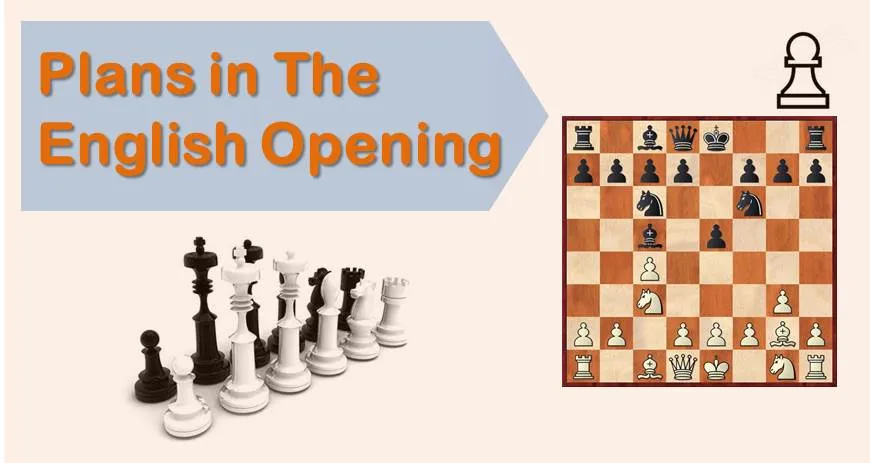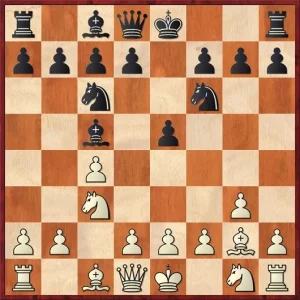English Opening: Beating The Popular 4…Bc5 System

English Opening is one of white’s most solid start choices. It usually leads to closed positions with very few exchanges on the board. The battle is tense from the very beginning and there aren’t many forced lines for any side. In his prime, Garry Kasparov used the English Opening quite often, achieving remarkable wins and doing a great contribution to the theory of this opening.
English Opening – Introduction
The fact that this was the main choice of Kasparov reveals that the move 1.c4 is also full of dynamism and opportunities for developing an aggressive game against black. If we look into the obscure, secondary lines of this opening, away from the main recommendations, we can find very interesting plans with excellent chances to set up difficult problems for our opponents. This is the subject of the present article, as we are going to discuss one non-standard way to deal with the popular system in which black plays 4…Bc5.

This development has become very popular in recent years. The idea for black is easy, to develop all his pieces in a logical way, then aim for ruptures on b5 or d5, depending on how the game goes. However, there are some drawbacks to this, the main one being the position of black’s dark squares bishop that often ends up ”burried” on a7. In fact, the main idea that has been suggested for white is to build a strong pawn chain with a3-b4-e3-d4, gaining space and restricting the bishop to the maximum. This is one way to play it.
Tip:
In order to fight blunders, find the right plan in complex positions and improve your positional and tactical vision we recommend you to sign up for our comprehensive training course. Hundreds of chess players already benefited from our training. Don’t wait, start winning chess games today.
English Opening – The rupture f2-f4
Another interesting idea for white is the rupture f2-f4. This plan is less known, however, we rate it very highly. Even if, objectively, it is not the best in terms of safety and control of the game, the practical problems that it presents for black makes it worth playing. White opens the F file against all forecasts in order to start an attack on the kingside.
There are a couple of points to keep in consideration when executing this idea:
- White leaves the pawn on d2 (This one is obvious. After playing f2-f4, the e3 pawn is supported best by another pawn rather than a piece.)
- If black captures on f4, always recapture with a piece, it can be either knight or rook. (In chess, the word ”always” should never be taken literally, but you get the point)
- The hidden assassin. Or, in other words, white’s bishop on b2. It’s one of the key pieces in the position and we can say that freeing the a1-h8 diagonal is another main goal that white wants to achieve with the f2-f4 pawn break.
The theory of this system is not too well developed yet. However, there have been already quite a few interesting games and we are sure many more will follow.
White develops his knight via e2:
In Granda, J – Castellanos, R, Benasque 2006, white applied this idea quite fast and without much preparation, achieving a very interesting position. See all the details in the game below.
English Opening – White develops his knight via f3:
This is the standard development for white and perhaps the most dangerous for black. White plays with maximum flexibility, keeping all his options open.
We can see white’s idea in action in the game between Movsesian and Soors. He played Nd5 first, then f4, achieving an advantage on both flanks.
Our next game simply shows the amazing attack that can emerge if black is not careful. Here, GM Potkin finishes the game in style with a beautiful rook sacrifice.
We hope you have enjoyed reading this article and the ideas presented here will serve you in your practice. Good luck!
Want to know more about English Opening? Look at:
If you want to improve your chess level, you need to have a clear study plan. If you aim for a dramatic improvement at chess you need to work on all of the elements of the game in a systematic way:
- tactics
- positional play
- attacking skills
- endgame technique
- classical games analysis
- psychological preparation
- and much more
That seems to be like a lot of things, and that is. But no worries, we have made it easy for you. Our comprehensive training course covers it all and much more. Sign up for 21 Day Training right now!










Comments: